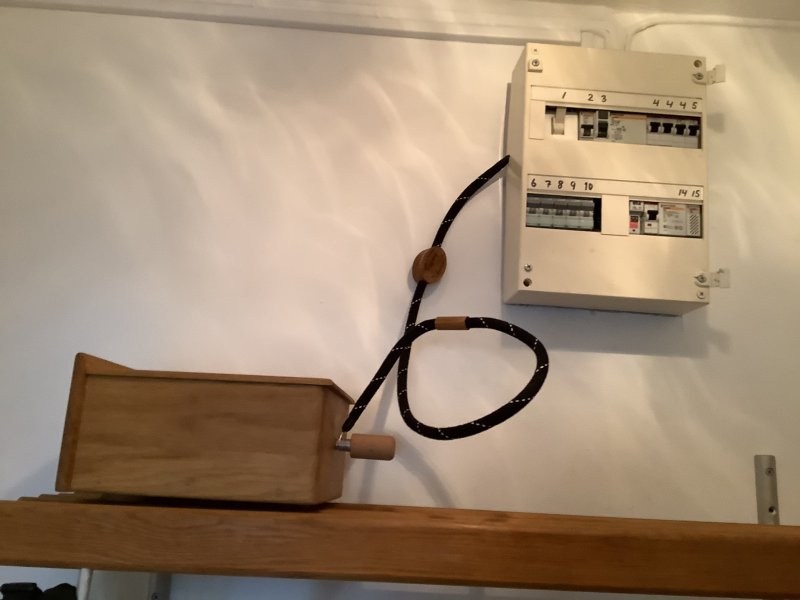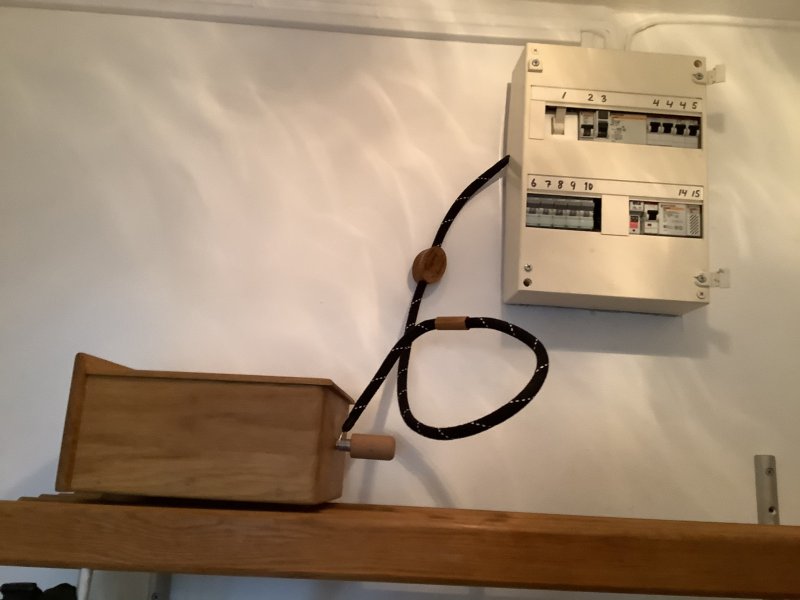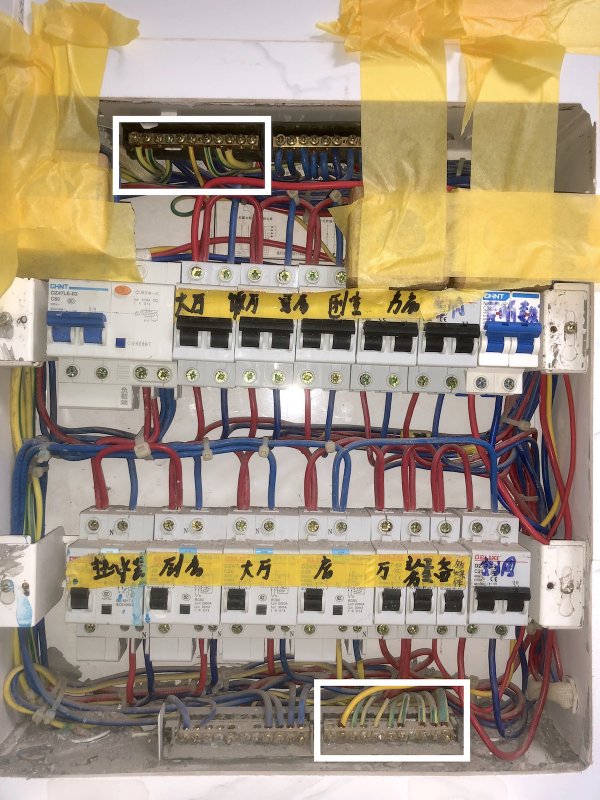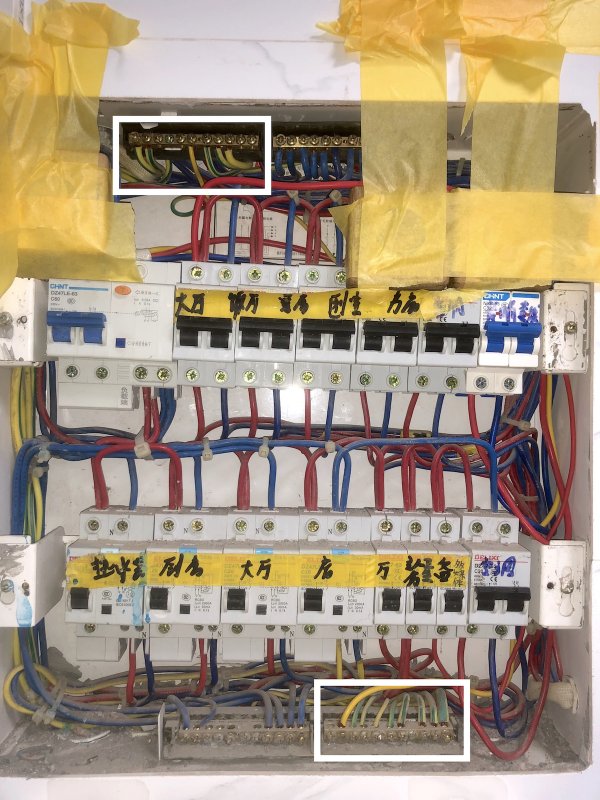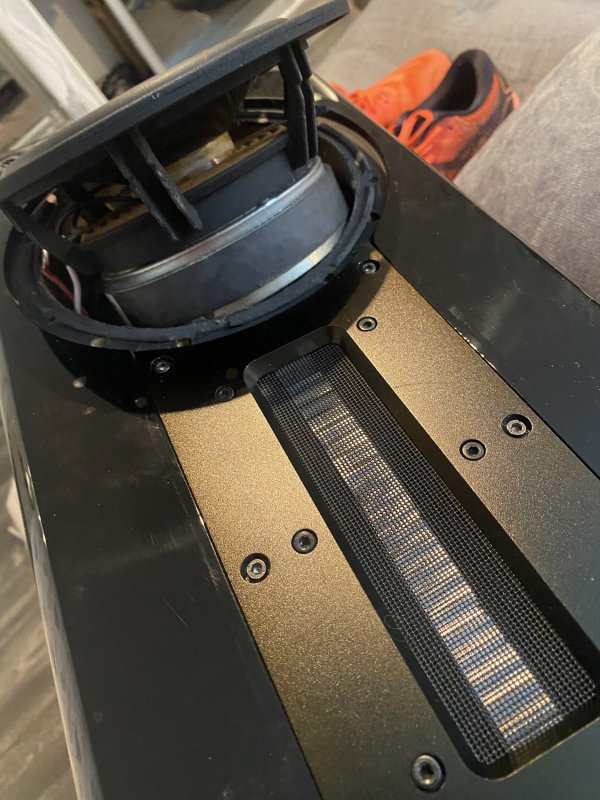IYou most Try order a yellow that is good start
Entreq Tellus grounding
- Thread starter spiritofmusic
- Start date
You are using an out of date browser. It may not display this or other websites correctly.
You should upgrade or use an alternative browser.
You should upgrade or use an alternative browser.
What are you connecting to?In testing grounding my power in my depatment
To ground plate Why all ground cable is ConnectWhat are you connecting to?
Where All green yellow cable are connected i gone post a foto later working all dayHow to identify the ground plate in my own box?
Attachments
Yes there you Connect is it working With magma feetI guess these are ground on my box. I've been testing using Magma Tungten Slim near the circuits for the Music server room and listening room. Been using the ugly tape until I'm sure I want to keep them there.
View attachment 118503
Any different With magma slimI guess these are ground on my box. I've been testing using Magma Tungten Slim near the circuits for the Music server room and listening room. Been using the ugly tape until I'm sure I want to keep them there.
View attachment 118503
I believe there is a difference however I have yet to determine if the difference is greater than if they are used in other places, and also if it matters if I use Nano instead of Magma slim. So further testing is needed. I don't currently have enough Magma and Nano to go around, so I am having to pick the location that gives me the most benefit.Any different With magma slim
I talk to to perolov entreq he isa friend to me he think nano could be betterI believe there is a difference however I have yet to determine if the difference is greater than if they are used in other places, and also if it matters if I use Nano instead of Magma slim. So further testing is needed. I don't currently have enough Magma and Nano to go around, so I am having to pick the location that gives me the most benefit.
but he tolv me test Bought
The Nano will be better, there is no doubt. But my Nano are all being used on top of power transformers on for LPS, AMP, and Power Conditioner. For me it's a tradeoff until I get more Nano (or perhaps something else)I talk to to perolov entreq he isa friend to me he think nano could be better
but he tolv me test Bought
Where Do you live in from SwedenThe Nano will be better, there is no doubt. But my Nano are all being used on top of power transformers on for LPS, AMP, and Power Conditioner. For me it's a tradeoff until I get more Nano (or perhaps something else)
Hello Roger. I have also experienced great benefits with grounding the safty ground to an Entreq box, but did it in a much simplier way. Entreq can provide a power plug (shuko only) for the Eartha cable. It only connects to the safety ground of the power socket, not to the live and neutral wires of the receptical.Where All green yellow cable are connected i gone post a foto later working all day
I suppose its much the same as connecting an Entreq box to a power conditioner (if it has a grounding screw, e.g. Puritan Audio Labs).
It should also be possible to remove the live and neutral pins from a power plug and only use the ground pin to connect the safety ground to an Entreq box if you dont want to get into the fuse box. In this way you can create something similar to the Entreq shuko plug.
I havent connected anything else to the Entreq box used for the safety ground. Same as you did. I dont want to risk any loops etc.
It does improve the music. In my case especially in the bass.
I have testing grounding my speaker insideHello Roger. I have also experienced great benefits with grounding the safty ground to an Entreq box, but did it in a much simplier way. Entreq can provide a power plug (shuko only) for the Eartha cable. It only connects to the safety ground of the power socket, not to the live and neutral wires of the receptical.
I suppose its much the same as g an Entreq box to a power conditioner (if it has a grounding screw, e.g. Puritan Audio Labs).
It should also be possible to remove the live and neutral pins from a power plug and only use the ground pin to connect the safety ground to an Entreq box if you dont want to get into the fuse box. In this way you can create something similar to the Entreq shuko plug.
I havent connected anything else to the Entreq box used for the safety ground. Same as you did. I dont want to risk any loops etc.
It does improve the music. In my case especially in the bass.
make everything better
Attachments
Grounding boxes designed to dump signal ground noise into the house (safety) ground come with a three-pronged plug where only the ground pin is connected to the box - the plus and minus pins are just for support. The Entreq design is supposed to dissipate this noise in a box of minerals (simulated soil). If connecting an Entreq grounding box to the wall socket ground improves the performance what does that suggest about Entreq's "box of dirt" design?Hello Roger. I have also experienced great benefits with grounding the safty ground to an Entreq box, but did it in a much simplier way. Entreq can provide a power plug (shuko only) for the Eartha cable. It only connects to the safety ground of the power socket, not to the live and neutral wires of the receptical.
I suppose its much the same as connecting an Entreq box to a power conditioner (if it has a grounding screw, e.g. Puritan Audio Labs).
It should also be possible to remove the live and neutral pins from a power plug and only use the ground pin to connect the safety ground to an Entreq box if you dont want to get into the fuse box. In this way you can create something similar to the Entreq shuko plug.
I havent connected anything else to the Entreq box used for the safety ground. Same as you did. I dont want to risk any loops etc.
It does improve the music. In my case especially in the bass.
FYI: https://hifiplus.com/articles/going-to-ground/
I've taken to calling most of these grounding solutions 'Fancy Dirt' for this very reason. However, I am a great believer in Fancy Dirt and its effects.Grounding boxes designed to dump signal ground noise into the house (safety) ground come with a three-pronged plug where only the ground pin is connected to the box - the plus and minus pins are just for support. The Entreq design is supposed to dissipate this noise in a box of minerals (simulated soil). If connecting an Entreq grounding box to the wall socket ground improves the performance what does that suggest about Entreq's "box of dirt" design?
FYI: https://hifiplus.com/articles/going-to-ground/
Entreq is not very public about how their boxes are designed except that they contain various types of metals and minerals. The article in hifiplus describes very well what I mean, and I respect the CAD company as a very serious player in the hifi business. CAD and Entreq are doing very similar products, and both have upgraded their lines in recent years. CAD certainly looks better, but I cant say which is the superior.Grounding boxes designed to dump signal ground noise into the house (safety) ground come with a three-pronged plug where only the ground pin is connected to the box - the plus and minus pins are just for support. The Entreq design is supposed to dissipate this noise in a box of minerals (simulated soil). If connecting an Entreq grounding box to the wall socket ground improves the performance what does that suggest about Entreq's "box of dirt" design?
FYI: https://hifiplus.com/articles/going-to-ground/
Connecting the ground pin in a wall outlet to a gounding box is probably similar to gounding the chassis of an amplifier. They are both part of the safety ground. But I dont mix safety ground and signal ground (e.g. the negative poles of the power amplifier) in one gounding box. I dont think that is advisable. I use both signal grounding and safety ground grounding (if you can put it that way) in my system. Signal grounding gives the best result, no question.
CAD and Entreq have different philosophies when it comes to signal grounding. CAD does not recommend gounding the loudspeaker negative poles of the amplifier. Entreq do recommend this. CAD prefers signal gounding at the sources (XLR, USB etc). Entreq also recommend gounding the sources along with the amplifiers negative speaker poles.
I have tried both and I think signal grounding the amplier gives a better result than signal grounding at the sources. Groundíng both amplifier and sources is probably the best. I havent done that -- I dont have enough boxes.
But I understand the CAD position -- gounding the amplifiers speaker connectors can be hazardous. In my opinion you need two separate gounding boxes -- one for each negative pole. Some amplifier can possibly be connected to the same box on both negative poles, but its hard to know what applies to a specific amplifier. Using two boxes should be safe.
This begs the question where it noise is coming from and which component is the most sensitive to high frequency noise. Noise on the live and neutral lines of the power cables is definitely detrimental. In my experience it reduces the speakers bandwidth --both bass and high frequency of the music. This can be dealt with if you have a power filter like Gigawatt.
Signal grounding has a similar effect -- it expands the bass -- but above all I get a lot more dynamics -- especialy microdynamics with signal grounding. This translates into a lot more space and natural sounding voices in the music.
Grounding the safety ground seems to lower the noise level -- I dont hear much changes in the nature of the sound.
So which component is the most sensitive? Im not sure, but I think the loudspeaker is a good candidate. As to the worse source of noise I think the power line is the worse offender. Regular power lines are perfect antennas in a completely toxic high frequency environment. Measurements in Stockholm have disclosed dangerous levels of 5G microwaves in the city center and with the new WiFi7 opening up new 6GHz bands it will only get worse.
Almost always electricity enters over the live line to the components, travels through primary windings and exists over neutral. Neutral is not connected to any other place inside components. If it is a single ended design then all negative signal ends connected to chassis and ground of power cord. Most probably noise is not coming from any other place than signal itself because single ended means it runs over one line and that’s the hot line. If you disconnect ground of power cord then signal ground or chassis travels to neutral inside power transformer. You need a good ground for signal to flow properly not to eliminate noise. Noise is secondary objective.This begs the question where it noise is coming from and which component is the most sensitive to high frequency noise. Noise on the live and neutral lines of the power cables is definitely detrimental.
Regarding neutral connection balanced components are not too different. Think them like two hot lines, positive and negative but still runs to ground.
There is a misunderstanding like ground is an extra, a nice to have feature, only good for reducing noise. No, ground is necessary because all signals flow to ground. Only electricity your component draws from the wall flows to neutral because neutral is it’s signal ground.
Last edited:
Basically I used 6mm2 7N copper connected directly from my hi-fi to the mains supplier ground. Then all my cable grounds star earthed to the same single low impedance ground. So wired, my entire system shared identical ground potential so no current flows between components.
With the system thus wired I auditioned various Entreq boxes and cables hooked up in several different ways but heard no significant change in sound quality. The only connection that did make a difference was when I connected the chassis ground of a AQVox SE switch to an Entreq box. I was able to reproduce the change by running a standard high purity copper earth cable between the AQ-Vox chassis and the system ground.
With the system thus wired I auditioned various Entreq boxes and cables hooked up in several different ways but heard no significant change in sound quality. The only connection that did make a difference was when I connected the chassis ground of a AQVox SE switch to an Entreq box. I was able to reproduce the change by running a standard high purity copper earth cable between the AQ-Vox chassis and the system ground.
Similar threads
- Replies
- 0
- Views
- 252
- Replies
- 1
- Views
- 631
- Replies
- 5
- Views
- 2K
- Replies
- 107
- Views
- 6K
| Steve Williams Site Founder | Site Owner | Administrator | Ron Resnick Site Owner | Administrator | Julian (The Fixer) Website Build | Marketing Managersing |







